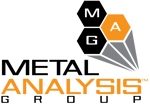EXPERT-APPROVED: XRF CONSUMER GOODS
Expert-Approved: XRF Analyzers for Consumer Goods from Metal Analysis Group
Manufacturers, importers, distributors, and retailers face the formidable task of adhering to strict regulations governing the presence of hazardous materials in consumer goods. Lead and other toxic metals pose significant health risks, prompting regulatory bodies like the US Consumer Product Safety Commission (CPSC) and the European Union's Product Safety Enforcement Forum (PROSAFE) to impose stringent limits on their levels in various products, from toys to cosmetics.
Metal Analysis Group handheld XRF analyzers have emerged as indispensable tools in this regulatory landscape, trusted by authorities to screen consumer products for regulated elements such as lead, barium, cadmium, and more. These analyzers provide rapid, on-the-spot screening of metals, plastics, fabrics, and paints at different points along the supply chain, including the receiving dock, warehouse, assembly line, and finished goods inventory.
By implementing Niton analyzers in their testing protocols, businesses can standardize inspection procedures, generate supply chain documentation based on empirical testing, and make quick decisions regarding the acceptance or rejection of raw materials or finished products. This proactive approach not only helps prevent hazardous materials from entering the manufacturing process but also minimizes the risk of non-compliance with regulatory standards.
Moreover, Niton analyzers play a crucial role in demonstrating due diligence and meeting General Conformity Certification (GCC) requirements. Their ability to quickly screen products for lead and other regulated elements ensures that manufacturing programs remain fully compliant while streamlining production processes.
From toys and apparel to furniture and cosmetics, consumer goods across various categories are subject to testing for hazardous materials. The paint on toys, fabric in clothing, wood finishes on furniture, and metal components in jewelry are just a few examples of potential sources of lead contamination. By employing handheld XRF technology, businesses can safeguard consumers and protect their brands by ensuring full compliance with regulatory standards.
However, it's essential to recognize the complexities of XRF screening and the limitations of the technology. While XRF screening can identify lead, it cannot detect phthalates, another category of regulated chemicals. Proper training and knowledge are critical for effective XRF screening, and Intertek offers a comprehensive CPSIA XRF Screening Training Program to ensure quality, knowledge, and process control.
In summary, handheld XRF analyzers play a vital role in enhancing supply chain compliance and protecting consumer safety. By leveraging the capabilities of these advanced analytical tools, businesses can uphold regulatory standards, mitigate risks, and uphold their commitment to consumer welfare and brand integrity.
